2,000-Year-Old Roman Cavalry Helmet Discovered: A Glimpse Into the World of the Equites Romani
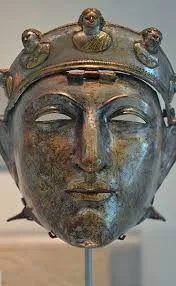
As of 10:34 PM MDT on Thursday, October 30, 2025, a remarkable archaeological find has transported us back to the heights of Roman military prowess: a 2,000-year-old cavalry helmet, emblematic of the elite Equites Romani. Unearthed in the Netherlands and recently unveiled at the British Museum in London, this intricately crafted bronze helmet—complete with a face mask—represents one of the finest surviving examples of Roman equestrian gear from the 1st century AD. Adorned with gold and silver inlays depicting gods and mythical beasts, the helmet not only showcases the artistry of Roman craftsmen but also illuminates the lives of the Equites, the empire’s aristocratic horsemen who charged into battle as symbols of imperial might. This discovery, a testament to the fusion of utility and splendor, provides an intimate glimpse into the world of the Equites Romani, whose thunderous charges shaped the fate of empires.
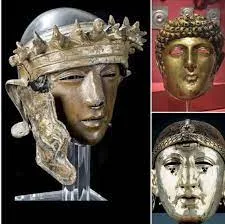
The Discovery and Unveiling
The helmet was discovered in the 1960s during excavations at Valkenburg, a Roman frontier fortress in the Netherlands, but remained in storage for decades until its restoration in 2021. Conservators at the British Museum painstakingly removed layers of rust and soil, revealing a masterpiece etched with intricate decorations of precious metals. The object, dated to the 1st century AD during the reign of Emperor Nero or Vespasian, is a type D cavalry sports helmet, designed for parades and tournaments known as hippika gymnasia. Its unveiling on April 27, 2021, at the British Museum drew international acclaim, with curator Ken Wallace highlighting its “extraordinary craftsmanship” in a press release. The helmet, now on display alongside replicas, joins other treasures like the Emesa helmet from Syria, underscoring Rome’s far-reaching influence.
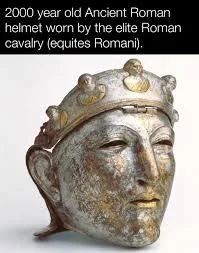
The find’s context—a shrine pit containing the helmet alongside thousands of Iron Age and Roman coins and pig bones—suggests it was a votive offering, perhaps dedicated by a cavalry officer after a victorious campaign. This ritual deposition mirrors the cultural practices of the Moors in Al-Andalus or the ritual burials at Angkor Wat, where artifacts were interred to honor gods or mark achievements.
The Equites Romani: Elite Horsemen of the Empire
The Equites Romani, or “Roman knights,” were the empire’s aristocratic cavalry, drawn from the wealthiest citizens who could afford horses and armor. Numbering 300 per legion in the Republican era, they evolved into auxiliary units under the Empire, with full-face helmets like this one reserved for elite parades and battles. As described by historian Polybius, equites were lightly armored in the early Republic but by the 1st century AD wore ornate gear, including Corinthian helmets with masks to intimidate foes and project imperial glory. This Valkenburg helmet, classified as a sports type, was likely used in equestrian displays, where riders showcased horsemanship in mock combats, akin to the gladiatorial spectacles at the Aspendos Theater.
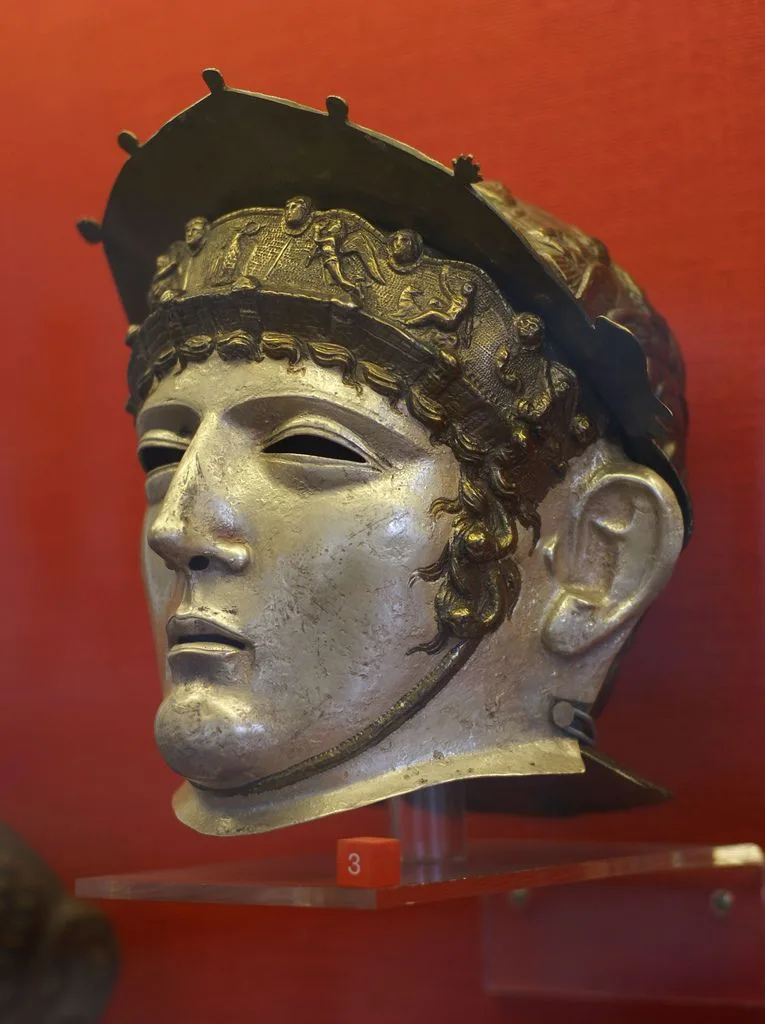
The helmet’s design—featuring a face mask with eye slits and a nasal guard—provided protection while allowing visibility, with the iron core beneath bronze plating defending against blows and arrows. Gold and silver inlays depicting Mars, Victoria, and mythical creatures symbolized divine favor, reflecting the equites’ role as Hadrian’s elite or Trajan’s vanguard in campaigns like the Dacian Wars. Like the Lamassu guardians of Mesopotamia, these helmets blended intimidation with artistry, embodying the equites’ dual role as warriors and symbols of Roman superiority.
Craftsmanship and Cultural Significance
Crafted from bronze with an iron core, the helmet exemplifies Roman metallurgical skill, with the mask’s delicate features—high cheekbones, stern gaze, and flowing beard—evoking idealized Roman masculinity. The inlays, a technique mastered in workshops like those in Capua, required precision etching and gilding, paralleling the intricate bas-reliefs of the Alhambra or Gustav Klimt’s early portraits. Weighing around 5–7 kg, it balanced protection with mobility, essential for cavalry charges at speeds up to 40 mph.
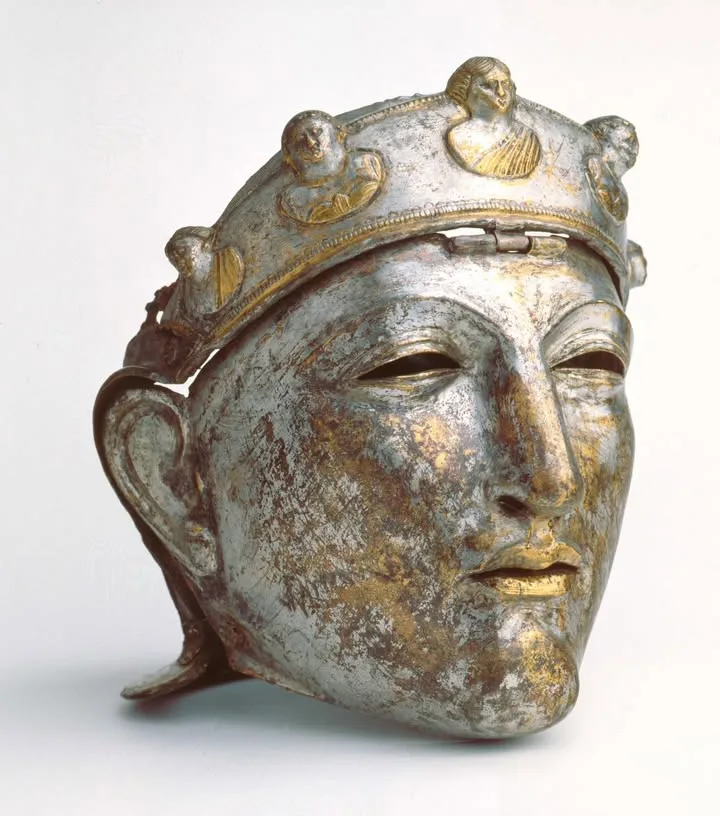
Culturally, the helmet illuminates the equites’ social status; as members of the ordo equestris, they were often senators’ sons, wielding influence in politics and commerce. Their parades, as depicted on Trajan’s Column, reinforced Roman identity, much like the Jolly Roger’s flags intimidated foes. The find’s location in Germania Inferior highlights Rome’s frontier legacy, with Valkenburg a key outpost against Germanic tribes.
Preservation and Modern Legacy
The helmet’s survival, buried in a shrine, speaks to Roman reverence for sacred offerings, akin to the Moors’ votive practices or the ritual burials at Olduvai Gorge. Restored using modern techniques like X-ray analysis and 3D modeling, it now educates visitors at the British Museum, alongside replicas for hands-on exhibits. Its 2021 unveiling sparked renewed interest in Roman cavalry, influencing documentaries and games like Total War: Rome II.
Lessons for Today
This discovery imparts timeless lessons:
- Engineering Excellence: Its design, like the SR-71’s stealth, inspires modern armor and materials science.
- Cultural Fusion: Roman art’s blend of utility and beauty, akin to the Moors’ Alhambra, encourages interdisciplinary creativity.
- Historical Privacy: The shrine’s votive nature, similar to the black cat of Emperor Uda, reminds us of personal legacies in public history.
A Helmet of Legacy
The 2,000-year-old Roman cavalry helmet from Valkenburg, unveiled in 2021, embodies the Equites Romani’s glory, its gold-inlaid mask a shield of art and war. Like the precision of Hot Wheels or the mystery of the De Loys ape, it bridges past and present, inviting us to don the legacy of Rome’s knights.





